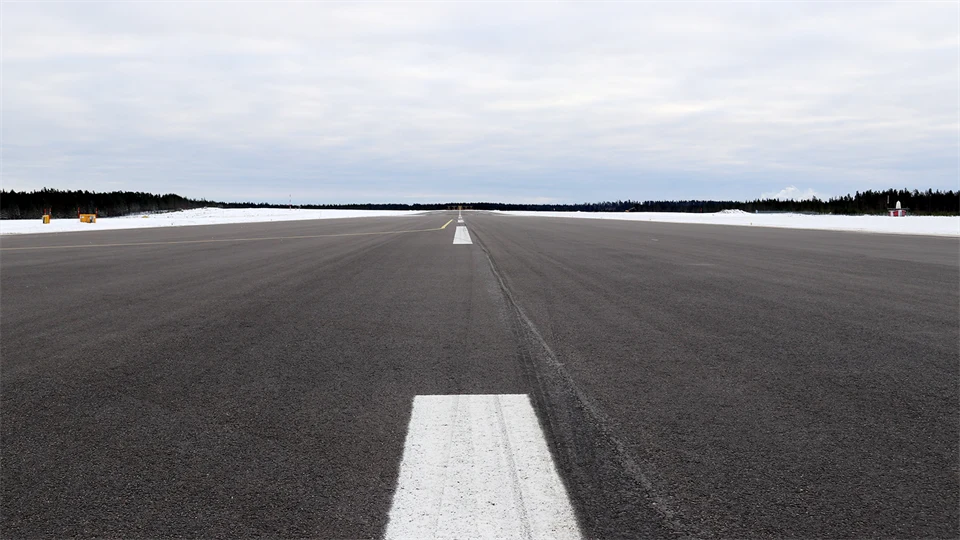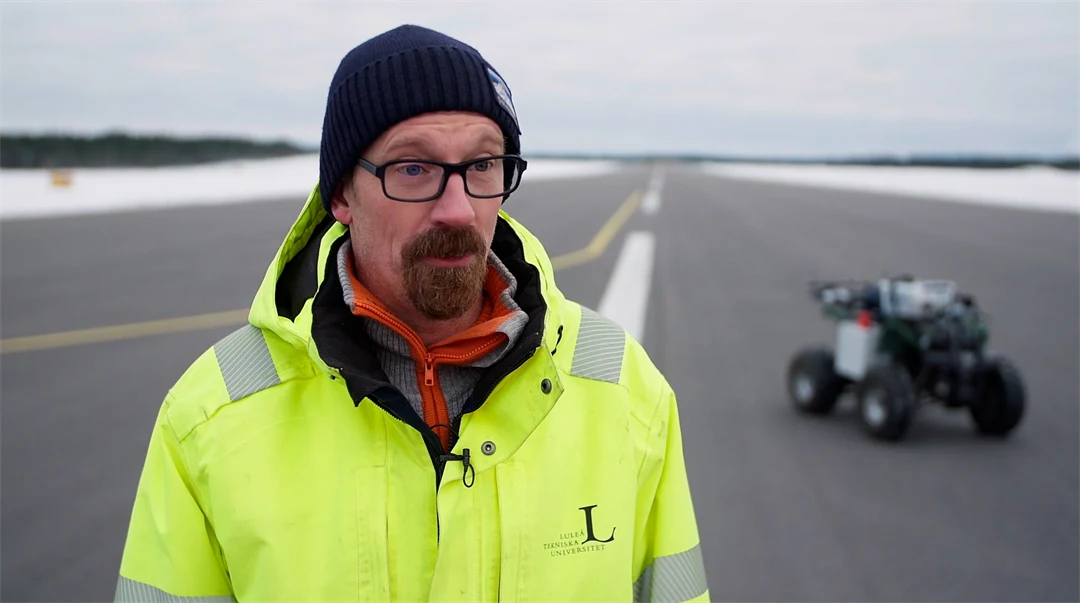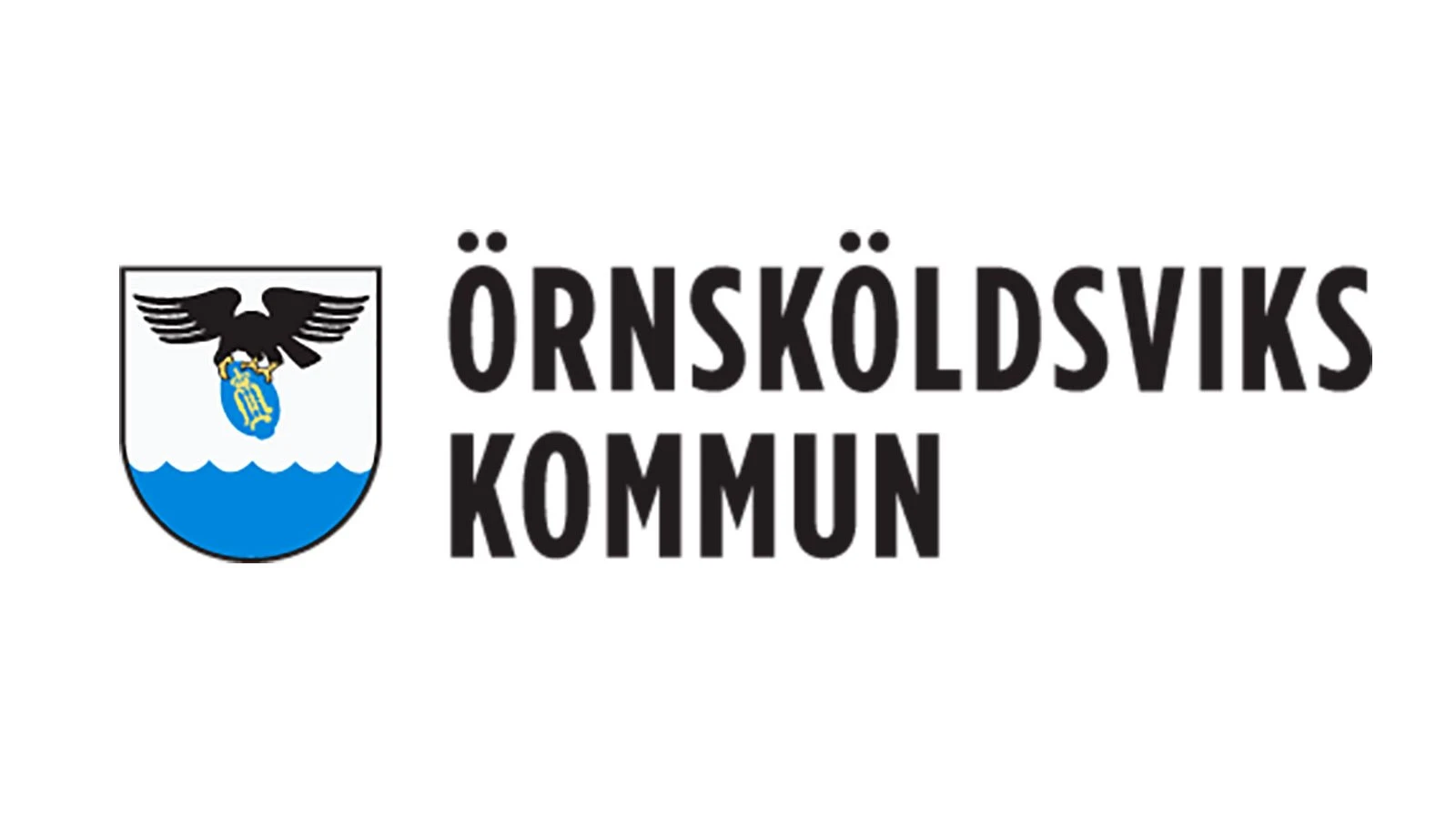Several advancements towards the autonomous airport of the future
Autonomous measurements of the runway surface as well as more opportunities to monitor vehicles and drones at airports. A three-year research project at Mid Sweden University has made several advancements in creating the airport of the future with safe and cost-effective solutions.
"We have had very strong collaboration partners who have contributed to new knowledge, and in addition to the results we have achieved, we have also identified several new research challenges together", says Benny Thörnberg, Associate Professor at Mid Sweden University.
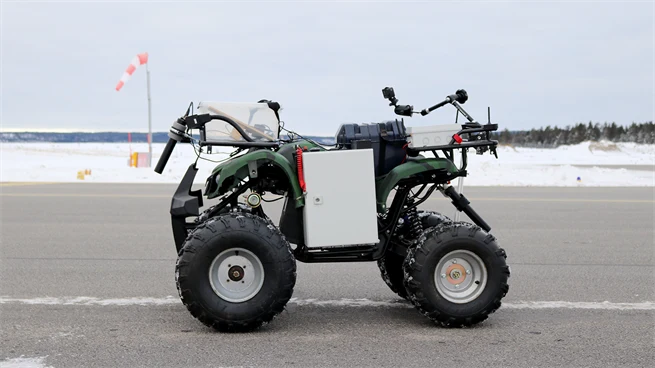
The autonomous quad bike developed by the project for autonomous measurements. Photo: Christine Grafström.
One of the results of the project is the development of a self-driving quad bike to measure the surface of the airport's runways. The measurement system used combined laser and camera technology and has been further developed by the project's corporate partner Klimator and adapted to the airport's specific conditions and needs. The development of autonomous technology to measure friction on runways is crucial for flight safety and an important achievement of the project.
"The new technology can measure over a larger area, instead of just one point on the runway. The system can also determine if the surface is dry or wet, consists of snow, slush, or ice, which can be very difficult to detect with the human eye. Together with information about the surface friction, the technology provides important decision support for the airport's personnel", says Torbjörn Gustavsson, Head of Research and Development at Klimator.
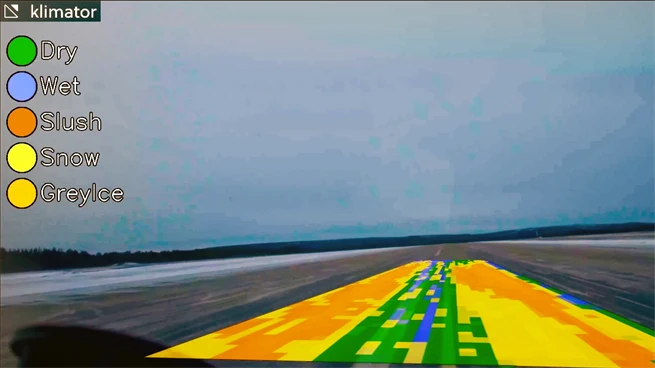
Image from the camera measurement where colors indicate whether the runway surface is dry, wet, consists of slush, snow, or ice. Photo: Klimator.
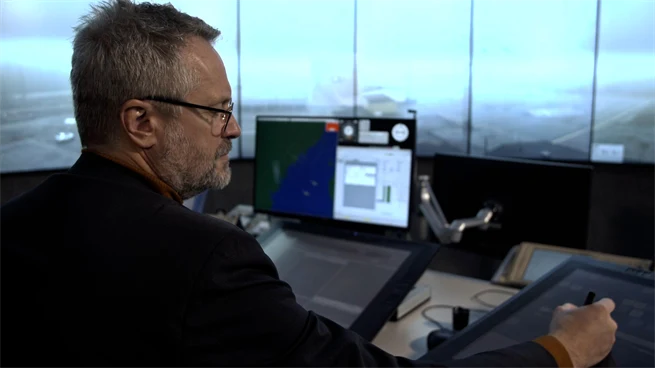
Örnsköldsvik Airport is remotely controlled from Sundsvall – Timrå Airport. Photo: SLICE.
The project has also expanded the security system DRIWS so that air traffic controllers located elsewhere can access the information provided by the system.
"This system serves as an invisible fence around the runway where all connected vehicles request permission to enter the runway, and an alarm is triggered in case of unauthorized intrusion. This enables air traffic controllers to see which vehicles are on the runway even in thick fog and extremely poor visibility", explains Erik Bäckman, responsible for the remotely controlled air traffic control tower in Sundsvall.
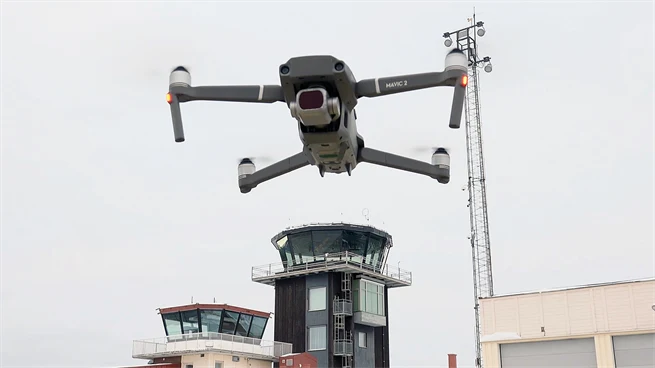
A drone taking off from Örnsköldsvik Airport. Photo: SLICE.
The number of drones in society has exploded in recent years, posing a new challenge for airport personnel. Therefore, the system has also been developed for the positioning of drones, which can be valuable in, for example, rescue operations where the technology can be used for safe takeoff and landing of drones at airports and ensure that they do not affect air traffic.
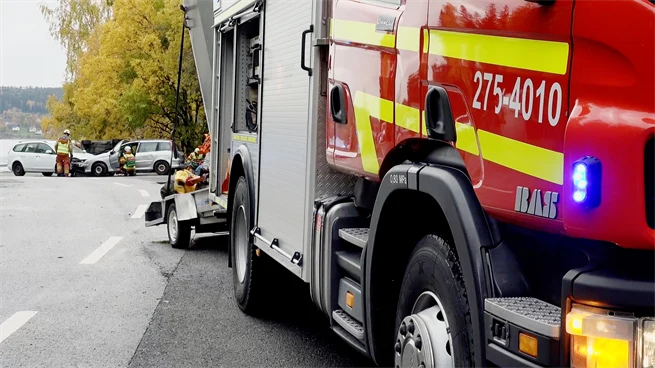
Rescue exercise in Sandö. Photo: SLICE.
"Using drone technology to quickly get an overview of an accident site provides valuable information for the emergency services to efficiently plan the operation, save both time and lives, and minimize the consequences", says Anders Lundin, production planner at Region Västernorrland.
Thanks to the project, researchers at Mid Sweden University have identified several new research challenges for the future. One such challenge is to investigate whether camera technology can be further developed to also measure the amount of chemicals on the runway, as chemicals are used for, among other things, anti-icing.
"We also want to investigate whether it is possible to perform laser measurements at longer distances, for example, from a drone, and how different weather conditions affect the measurement method. We are also starting a new project where we will research sensor technology to measure the amount of chemicals on runways", says Benny Thörnberg, researcher at Mid Sweden University.
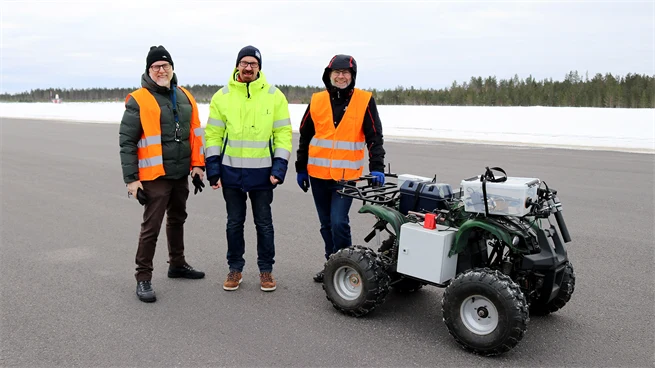
Benny Thörnberg, researcher at Mid Sweden University, Johan Casselgren, researcher at Luleå University of Technology, and Rickard Hamrin, research engineer at Mid Sweden University, along with the autonomous quad bike developed in the project. Photo: Christine Grafström.
In the project, Mid Sweden University collaborated with Örnsköldsvik Airport, Klimator, Saab, Luleå University of Technology, Combitech, RISE, the Swedish Transport Agency, Örnsköldsvik Municipality, and Region Västernorrland. The project was funded with support from Vinnova. Read more about the project: www.miun.se/autonoma_flygplatser.
Contacts:
Benny Thörnberg, researcher at Mid Sweden University, +46 10-142 89 17, benny.thornberg@miun.se
Robert Gyllroth, CEO, Örnsköldsvik Airport, +46 660-874 21 or +46 70-528 74 21, robert.gyllroth@oer.se
Torbjörn Gustavsson, head of research and development, Klimator, +46 709-170 252, torbjorn.gustavsson@klimator.se
Erik Bäckman, COO RTC Sundsvall, Saab Digital Air Traffic Solutions AB, +46 10-216 07 41, erik.backman@saabgroup.com
Anders Lundin, production planner, Region Västernorrland, anders.lundin@rvn.se
Johan Casselgren, researcher at Luleå University of Technology, +46 920-491409, johan.casselgren@ltu.se
Patrik Jonsson, Combitech, +46 734-460318, patrik.jonsson@combitech.com
Maria Wall Petrini, CEO, LFV Aviation Consulting AB, +46 70-814 86 53, maria.wallpetrini@lfv.se
Anna-Maria Selvehed, project manager at Mid Sweden University, +46 10-142 86 97,
anna-maria.selvehed@miun.se
